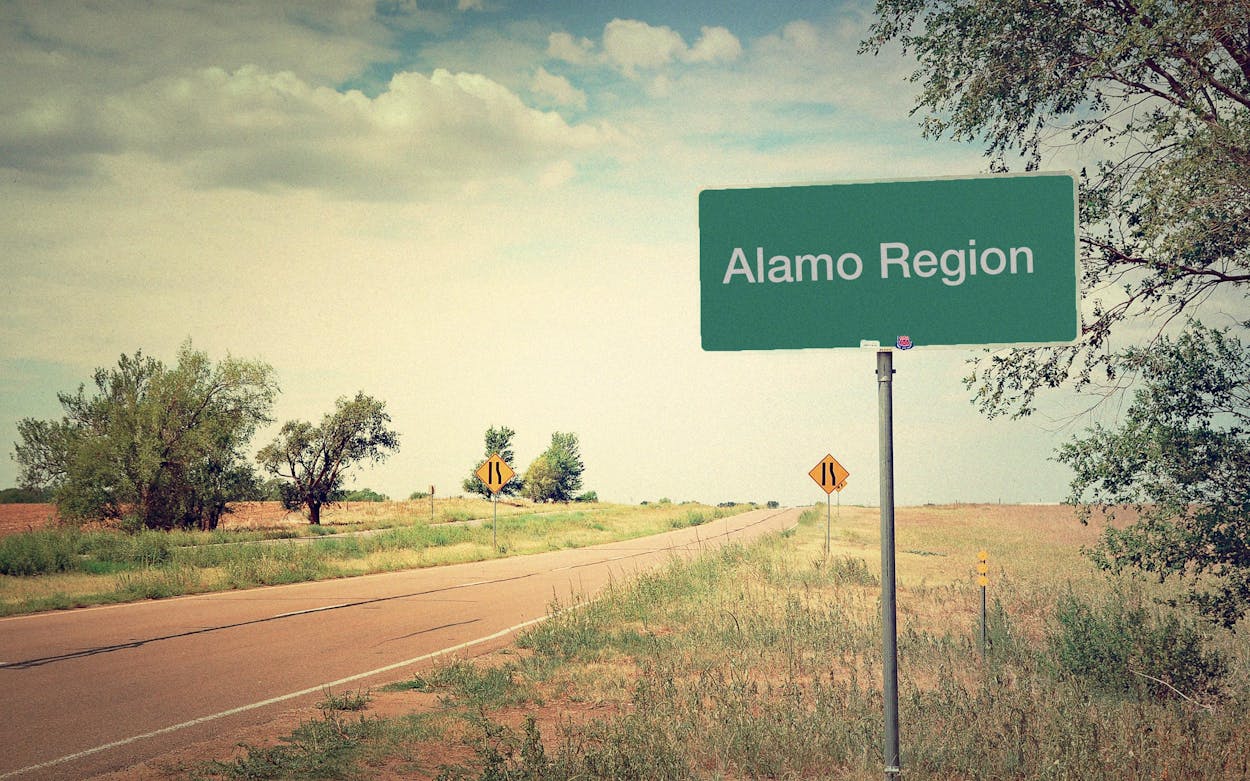On Sunday, the New York Times Magazine published an in-depth feature about the San Antonio Food Bank and the challenges faced by Texans struggling to feed their families amid the coronavirus pandemic. The story is a compassionate, strongly reported piece of journalism that seems to draw much of its inspiration from powerful work by the San Antonio Express-News and photographer William Luther. (The Times story acknowledged that “aerial photos” of the food bank’s parking lot had become a symbol of the economic insecurity brought by the pandemic, but neglected to mention who took or published the photos.)
As noted by the Houston Chronicle‘s Jennifer Chang, the story is part of the paper’s controversial tradition of re-reporting stories that have been told elsewhere as if they were first discovered by the Times‘s writers. In addition to that, though, there was one part of the story that no one from Texas would have written. In describing the San Antonio region, the story claimed that “San Antonio is the economic heart of a swath of south-central Texas called the Alamo, where thousands have lost their jobs, particularly in restaurants and the oil and gas industry.” To which we—like many on Twitter and elsewhere—respond with a confused, “uhhhh, what?”
Excuse me??????? https://t.co/Rq25jtmSQi pic.twitter.com/Krl6PMXBJp
— Lauren Caruba (@LaurenCaruba) May 31, 2020
Good article but… fact check – this area isn’t called “the Alamo” 🤦🏻♀️///At the San Antonio Food Bank, the Cars Keep Coming – The New York Times https://t.co/AsbgUSCpT8
— Rebecca Hirsch (@rebeccahirsch) June 1, 2020
raise your hand if you’re from Texas & have never once in your life heard south-central Texas described this way 🙋🏻♀️@nytimes 👀 https://t.co/1vU17MSwpG pic.twitter.com/nwLJ5KBDIT
— Vail Kohnert-Yount (she/her) (@vailkoyo) May 31, 2020
If you say “the Alamo” in San Antonio, people do not respond with a question about what you are referring to. They are talking about the old mission located at 300 Alamo Plaza, where Davy Crockett, Jim Bowie, William Travis, and about two hundred other Texians died. Their opinions of the building and what it represents may wildly differ—some dislike it as a tourist trap, others disapprove of casting the building’s defenders as heroes—but nobody uses “the Alamo” to refer to “a swath of south-central Texas.” That holds true statewide, too. Whether you are in Beaumont or El Paso, if you tell someone you are going to “the Alamo” this summer, they will expect to see photos of the illuminated plaza and the smaller-than-it-seems-like-it-should-be old church on your Instagram. They will not ask if you went to Fredericksburg or Kerrville, because if that were the case, you would not have said you were going to “the Alamo.” If you go to San Antonio during a normal, non-pandemic time and take in only a Spurs game and a visit to Fiesta Texas, and you tell people you went to “the Alamo,” you have misled them.
So where did this come from? As near as we can tell, the only official reference to “the Alamo” as a region, rather than a historic landmark that 69-year-old British rocker Phil Collins inexplicably adores, comes from a page on the state comptroller’s website. On that page, the “Alamo region” is indeed a term that is used. Why did they do this? A spokesperson for the department said it was to recognize the names given by the Council of Governments, which lists a more limited “Alamo area.” But regardless, if state comptroller Glenn Hegar or anyone who worked for his office said during a meeting, “As you can see from our data on the Alamo,” the response would be “Why are you talking about the building at 300 Alamo Plaza?”—because no one refers to the region that way. (Except, perhaps, as part of a shorthand on a regional economic report that also refers to the Texas Panhandle as the “High Plains.”)
Still, in the absence of any evidence that anyone in Texas has ever verbally referred to the San Antonio region, stretching as far east as Port Lavaca and as far west as the Texas Hill Country, as “the Alamo,” we can only assume that the Times opted to include this line because they googled “San Antonio region” and stumbled upon this page from the comptroller’s office. That’s more funny than it is tragic—”where was this article published, New York City??“—but it does speak to why, when seeking to better understand the unique challenges faced by those who rely upon the services of the San Antonio Food Bank during the current crisis, we’ll look first to the folks at the San Antonio Express-News.
- More About:
- San Antonio







